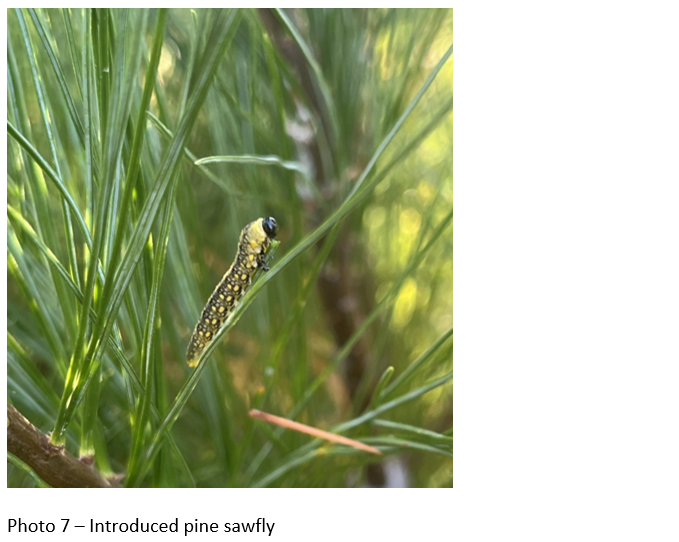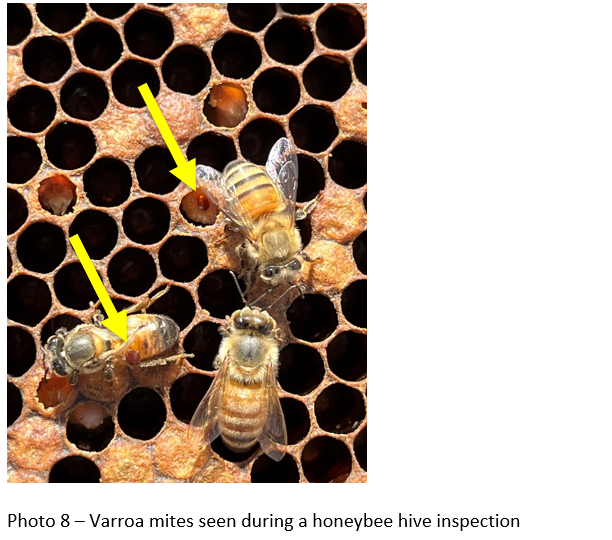This informal report by the Division of Entomology & Plant Pathology is a commentary on insects, diseases, and curiosities division staff encounter on a week-to-week basis. Comments and questions about this report are welcome and can be sent to your respective Inspector.
Our Website
Inspector Territories
Eric Biddinger (Nursery Inspector & Compliance Officer) -
Fall is the time that social bee and wasp nests are at their largest population and are most likely to be noticed. I frequently get questions about hives found in buildings or trees and the potential for people to get stung. I often start with these three questions.
First, what kind of insect is it? A cicada killer, while large and intimidating, is quite non-threatening. German yellowjackets or bald-faced hornets, on the other hand, have a mean streak and become quite aggressive when the hive is disturbed. If you need assistance identifying a bee or wasp, please contact your nursery inspector or county Purdue Extension office.
Secondly, where is the nest? For hives high up in trees or in infrequently traveled places on a property, it may be best to simply avoid them. In contrast, a ground nest next to a frequently used sidewalk or a hive next to a front door is a recipe for someone to get stung and may need to be dealt with. Hives inside structures also need to be carefully considered for potential structural damage.
Finally, if you decide to eradicate the nest, is this a DIY job or should you hire a professional? There are several pesticide products available to homeowners. If you use one of these products, read and follow label directions. Very large hives or structural nests may require specialized tools or expertise. Consult with a pest control operator for your best options.
Purdue Extension Social Bees and Wasps Publication
Purdue Extension Solitary Bees and Wasps Publication
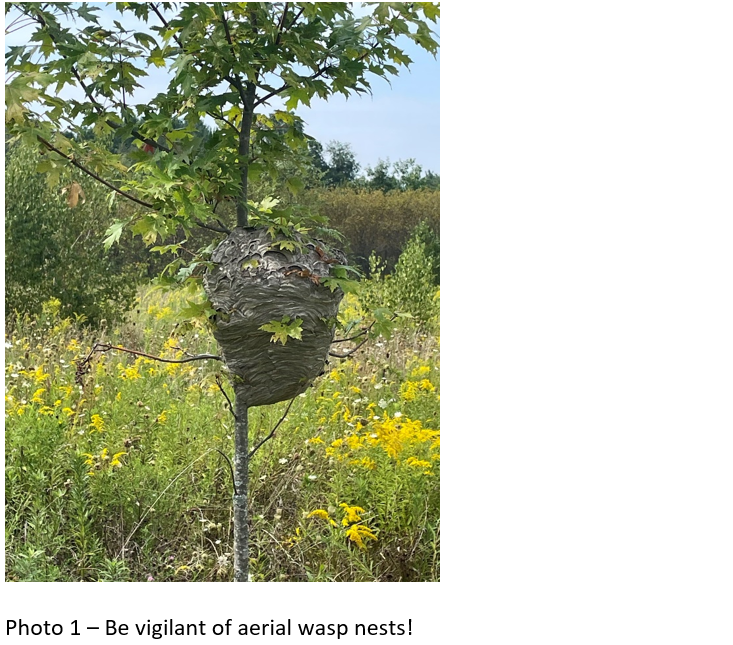
Kristy Stultz (Nursery Inspector & Compliance Officer) -
As we’re all wrapping up regular inspections, there aren’t usually a lot of new things to report, but I came across two items I can’t recall seeing previously, so I thought I’d share.
First is white prunicola scale (Pseudaulacaspis prunicola) as confirmed by Purdue. This is a non-native hard-shell scale making control a little more difficult. The elongated white scale is the males while the females are round. In this picture it appears the female covers are left are from a previous generation. They are identical in appearance to white peach scale (Pseudaulacaspis pentagona). These two species can actually be differentiated only by a scale expert. P. pentagona is a more southern species where it can have at least three generations a year.
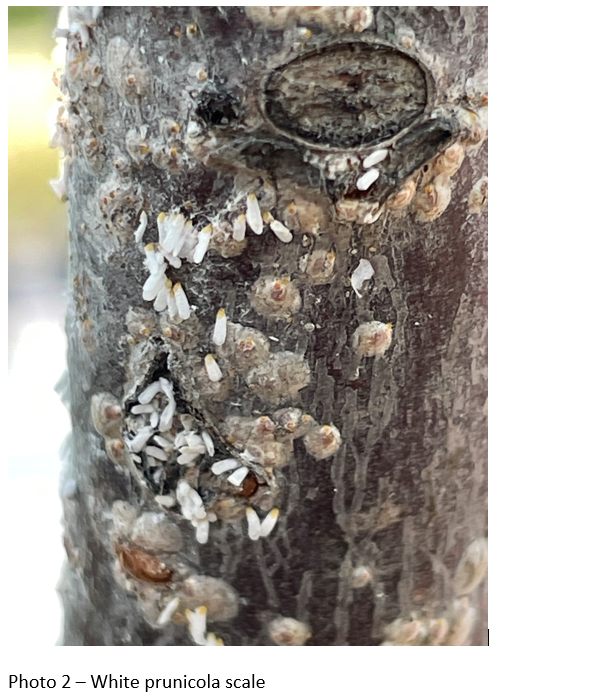
Treatment for both species is the same. While there are natural predators, high populations will likely need more intensive management. Using systemic chemical applications for pests like these needs to be done very cautiously. When a species is insect-pollinated, systemic chemical application, if done at the wrong time, can cause harm to pollinators. As we always say, the label is the law. Read it. Follow it and ensure the timing of application is done to control the problem with the least amount of auxiliary damage.
I also wanted to share a little pic of a Carolina mantid. I don’t see them very often so I spent a little extra time with them during my inspection.
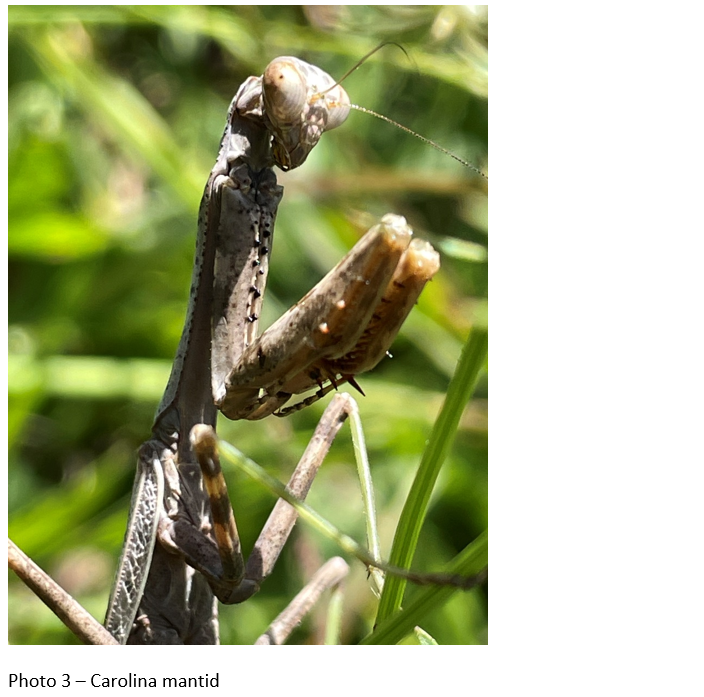
Lastly, remember spotted lanternfly is on the move. Now is a great time to find adults and maybe even some freshly laid egg masses. If you think you’ve spotted SLF in Indiana, we’ve got lots of ways to report it. You can use our online reporting tool, call 866-NO-EXOTIC, or pop us an email
Thanks for subscribing to the Division of Entomology & Plant Pathology’s Weekly Review!
Angela Rust (Nursery Inspector & Compliance Officer) -
I’m including photos of a few things found at the end of the inspection season this year.
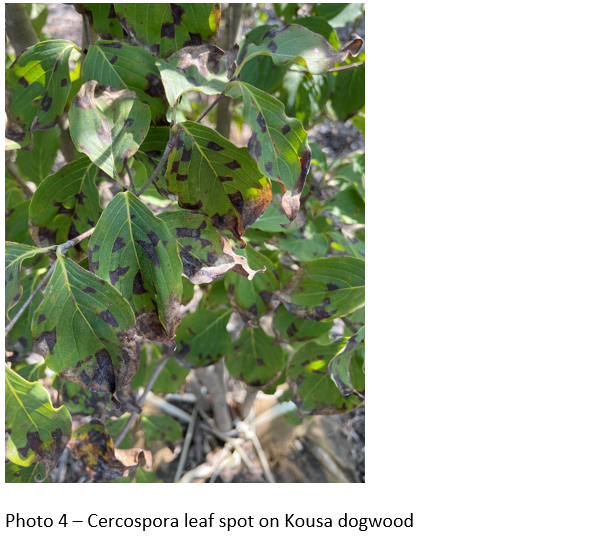
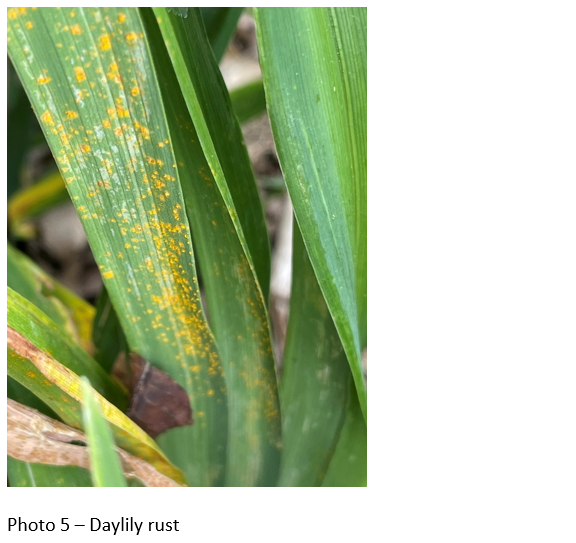
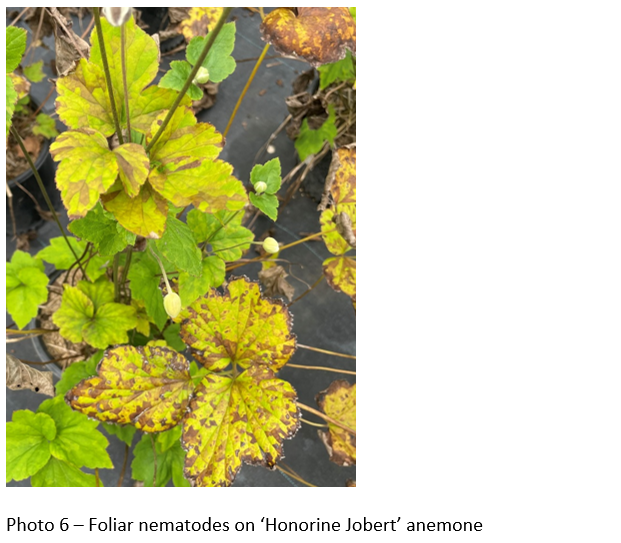
Ren Hall (Nursery Inspector & Compliance Officer) -
A couple photos from inspections last week.
